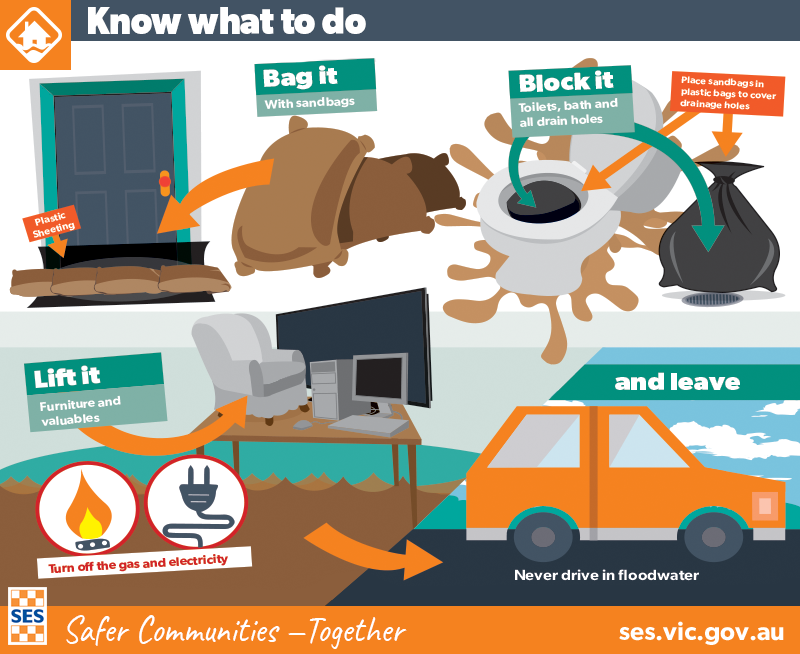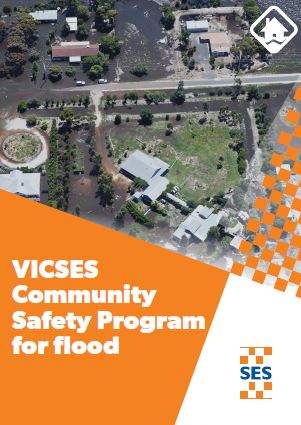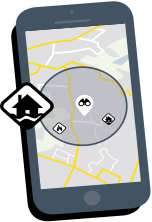The Victoria State Emergency Service (VICSES) is the control agency for flooding in Victoria, which means that we are responsible for planning for floods, supporting community preparedness and managing flood response if they do occur.
You don't know, so don't go
Storms and flash flooding are common throughout Victoria. Water across roads can hide hazards like potholes, dangerous debris such as rocks and branches, and road surfaces that have been washed away. You can easily get caught and trapped. And it only takes as little as 15cm of slow-moving water to take control of your car.
You might think you know the road, but you don’t when it’s covered with floodwater.
Don’t go through it. Keep you and your family safe.
For more information, please visit: You don't know, so don't go.
Be flood ready: Bag it, block it, lift it and leave
Victoria has many areas that are prone to flooding. Here's how you and your loved ones can be flood ready and stay safe.

Bag it: Get your sandbags ready and in place to prevent water from entering your property
Block it: Block drains, toilets, and doorways
Lift it: Lift your valuables up high
Leave: Get on your way to a safe destination as soon as possible.
Plan to be flood ready and stay safe
What to do during a flood
Flash flooding can occur quickly due to heavy rainfall and you may not receive an official warning. When riverine flooding is predicted, decide what you will do before flooding occurs.
Here's what to do if a flood occurs near you:
-
Floodwater is dangerous. Stay safe by never entering floodwater.
-
Call 132 500 for emergency assistance from VICSES.
-
Call Triple Zero (000) in life-threatening emergencies
-
Stay informed – monitor weather warnings and forecasts at the Bureau of Meteorology website, and warnings through the VicEmergency app, website and hotline (1800 226 226).
-
If you are inside:
-
Stay inside and be aware of rising floodwater.
-
If floodwater comes inside, move to a higher point such as a kitchen bench or second storey.
-
Contact family members and neighbours to ensure they are aware of the situation, if safe to do so.
-
-
If you evacuate from your home or workplace:
-
Remember to take your pets, mobile phone, spare clothes, mask and medications.
-
Turn off gas and electricity at your home or workplace.
-
Travel to the home of family or friends who are in a safe location, away from flooding.
-
Check for road closures when you leave and follow instructions from emergency services.
-
-
If you are outside:
-
Stay away from trees, drains, low-lying areas, creeks, canals, culverts and floodwater.
-
Seek shelter indoors, away from floodwater.
-
-
If you are driving when flash flooding occurs:
-
Stay safe by never driving through floodwater. It can take just 15cm of flowing water to float a car - That’s the height of an average pen.
-
Find alternative travel routes if roads or underpasses are flooded.
-
Be aware of driving hazards, such as mud, debris, damaged roads and fallen and damaged trees.
-
If driving conditions are dangerous, safely pull over on higher ground, away from trees.
-
Tune in to emergency broadcasters such as ABC local radio and designated commercial radio stations to monitor the situation.
-
Never drive on flooded roads - 15 to float
Driving on flooded roads is dangerous, and it doesn’t take much to make your car become unstable, lose traction or wash away.
Learn more about our 15 to float campaign.
More advice on how to prepare for a flood
If you live in, work in or visit areas on low-lying land, close to creeks or rivers, or near major stormwater drains you may be at risk of flooding. Always keep yourself safe.
Floodwater is a powerful force and there are many unseen dangers. Flooding can happen at any time, with little warning. You can’t see what lies under the water. Roads can be washed away, bridges can be damaged and floodwater may contain sewage and debris.
A well-prepared community can reduce the impact of flooding by up to 80%. People who are prepared are more likely to respond to floods appropriately and safely. People who have planned and prepared for emergencies can help to reduce the impact of emergencies on their homes and families and recover faster.
Take the time to prepare and know what to do before, during and after a flood with the VICSES emergency preparedness booklet for flood and storm.
Stay safe
-
Never drive, ride or walk through floodwater
-
Never allow children to play in or near floodwater
-
If evacuated, do not return until it is safe to do so
-
Follow the advice of authorities (including any requests for evacuation)
-
Leave early before flooding occurs and goto family or friends on higher ground if you can
-
Contact family, neighbours and those you know are at risk to ensure they are aware of the situation and know what to do
-
Learn more about the risk of flooding in your area - Check to see if your community has a Local Flood Guide or local flood information
Sandbagging can help during a flood
You can access sandbags at your local hardware store. During significant events, VICSES may establish sandbag collection points.
Learn how to sandbag using our sandbagging guide.
Learning what to do in a flood - for families
For families, we have created a simple and catchy animation to help you and your community prepare for floods.
Remember:
-
Plan to stay dry, check how high
-
Bag it, block it, lift it and leave
Prepare an emergency plan
Taking the time to plan for emergencies helps your think more clearly, have a greater sense of control, and make better decisions when an emergency happens. Your emergency plan should include:
-
Emergencies that might affect you
-
How they might affect you
-
What you will do before, during and after an emergency
-
Where you will go if you evacuate and the safest route to get there
-
A list of contact numbers you may need
You can use the VICSES flood checklist to prepare for a flood.
Further information
There are simple and practical steps you can take to protect yourself, the people you love, and the things you value most. Do one simple thing – create an emergency plan using RediPlan or the Get Prepared app. You can download your Rediplan template by visiting the Australian Red Cross website.
Local flood information for your area
VICSES has developed local flood guides to explain local flood risks for many flood prone communities and support you to prepare for and respond to flood events.
VICSES have also developed municipal flood emergency plans for emergency management agencies.
Use the lookup box below to find your local flood guide. You can search by suburb, postcode or council/municipality:
Community Safety Program for Flood

The Community Safety Program for Flood details how VICSES works with communities and partners, to achieve more aware, informed and prepared communities; supporting them to understand their flood risk and the relevance of taking action before, during and after emergency events.
Understand the flood history in Victoria
Victoria has many flood-prone communities with thousands of homes, properties and businesses at risk of flooding. Floods cause more damage per year in terms of dollars and lives lost than any other natural hazard in Australia. Flooding can happen at any time of the year.
If you live in, work in, or visit areas on low-lying land, close to creeks or rivers, or near major stormwater drains, you may be at risk of flooding. A well-prepared community can reduce the impact of flooding by up to 80%. People who are prepared are more likely to respond to floods appropriately and safely.
To understand more about flood warnings, levels and history, head to the know your hazard - flood page.
When to call VICSES during a flood
During a flood, VICSES help may include:
- Providing flood advice
- Protecting essential services
- Helping to protect properties
- Rescuing people from floodwater
- Advising of an evacuation
If you need help, please call 132 500. If its life threatening, call 000.
For more information on what the VICSES does in the community, visit the what we do page.






